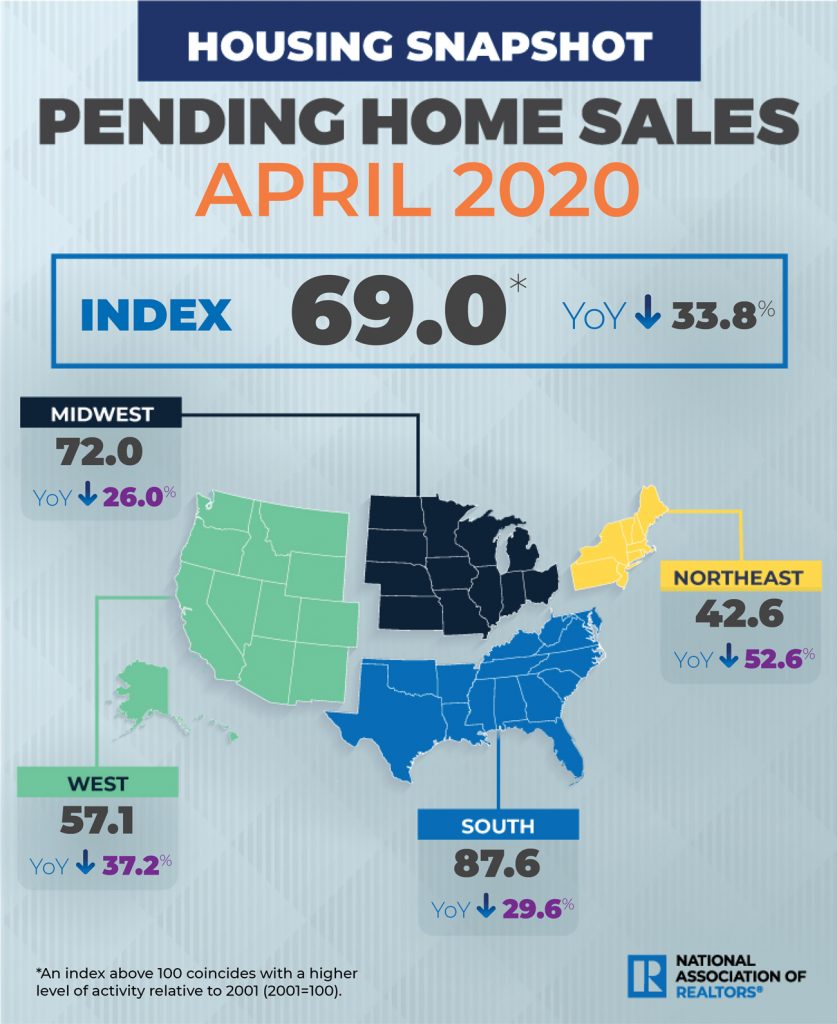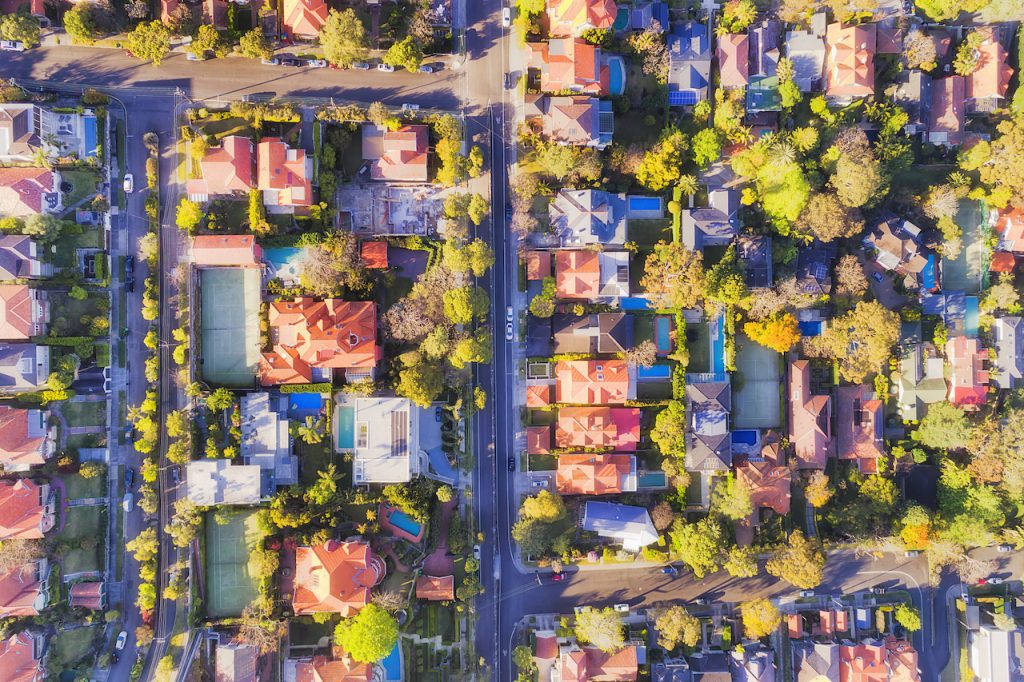Pending home sales hit rock bottom in April, marking two straight months of declines brought about by coronavirus-related lockdowns that effectively put the economy on ice.
The National Association of Realtors’ Pending Home Sales Index, a forward-looking indicator of home sales based on contract signings, fell 21.8% from March to a reading of 69 in April. Year over year, contract signings were down 33.8%.
“With nearly all states under stay-at-home orders in April, it is no surprise to see the markedly reduced activity in signing contracts for home purchases,” said NAR Chief Economist Lawrence Yun in a press release.
April’s decline was significant, representing the single largest drop in pending home sales since NAR began tracking such data in January 2001. Every major region across the country was affected, as stay-at-home orders and economic woes put a damper on contract activity.
However, there was a marked difference when looking at the data from region to region, with the Northeast and West seeing decreases that far outpaced what was seen in other areas.
In the South, rates of declines in pending sales were less severe than national figures. The PHSI dropped 15.4% to an index of 87.6, and 29.6% from April 2019.
Yun predicted that April— traditionally one of the busiest months for the housing market — will represent the bottom in terms of pending contracts, and the month of May for closed sales. But he said he expects things will turn around after that, forecasting less of a decline in the months ahead than he had previously predicted.
“Given the surprising resiliency of the housing market in the midst of the pandemic, the outlook for the remainder of the year has been upgraded for both home sales and prices, with home sales to decline by only 11% in 2020 [and] the median home price projected to increase by 4%,” Yun said. “In the prior forecast, sales were expected to fall by 15% and there was no increase in home price.”
Part of the reason for Yun’s improved outlook lies with agents themselves, who have been quick to adopt digital technologies like virtual tours and closings done virtually using tools such as Zoom and DocuSign. A recent Flash Survey conducted by NAR found that 34% of Realtors reported successfully completing nearly all aspects of transactions while adhering to social distancing guidelines.
While another 34% of Realtors said their buyers were holding off for a couple of months, another 45% said those buyers are not expecting lower prices.
Prices do seem to have flattened, and nearly 70% of Realtors surveyed said their sellers have not had to reduce their prices in order to attract sellers, a sign that demand remains strong in many parts of the country. Ironically, the housing shortage that has plagued the real estate market for years has helped keep prices stable.
“While coronavirus mitigation efforts have disrupted contract signings, the real estate industry is ‘hot’ in affordable price points with the wide prevalence of bidding wars for the limited inventory,” Yun said.
How persistent the coronavirus will be remains to be seen, but one thing is certain: the pandemic has changed the way we view our homes in a fundamental way. “Home” is no longer just a place where we eat, sleep and entertain; for many it is also where we work, exercise and go to school.
As state and local economies reignite, Yun expects the market will experience the effect of pent-up demand after months of isolation.
“In the coming months, buying activity will rise as states reopen and more consumers feel comfortable about homebuying in the midst of the social distancing measures,” he said.

